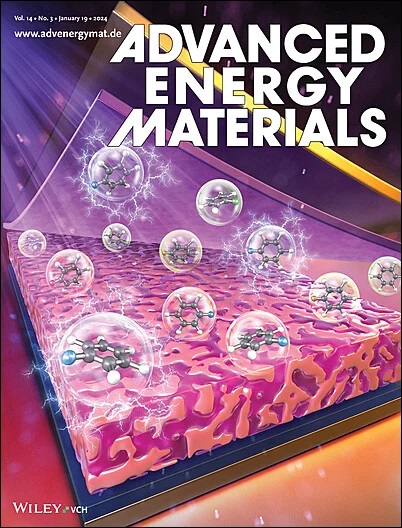Highly Open Phosphorized PtNi Nanohexapod/N‐doped Graphene Aerogel for High‐Performance Alkaline Hydrogen Evolution
IF 24.4
1区 材料科学
Q1 CHEMISTRY, PHYSICAL
引用次数: 0
Abstract
Developing cost‐effective, high‐efficiency, and stable electrocatalysts for the hydrogen evolution reaction (HER) in alkaline electrolytes is of critical importance for realizing renewable hydrogen technologies. However, the sluggish HER kinetics and unsatisfied stability remain critical challenges for their practical applications. Herein, a hierarchically porous phosphorized Pt‐Ni nanohexapod/N‐doped graphene aerogel (P‐PtNiNH/NGA) constructed by an oxidation‐phosphorization‐controlled reconfiguration strategy is presented. It enables fast water dissociation kinetics for an abundant supply of hydrogen ions, strong electron interaction for optimal intermediate adsorption, and an excellent anchoring effect of the NGA to avoid the aggregation and Ostwald ripening of the PtNiNHs, thus exhibiting superior activity and exceptional stability toward alkaline HER. The P‐Pt求助全文
约1分钟内获得全文
求助全文
来源期刊

Advanced Energy Materials
CHEMISTRY, PHYSICAL-ENERGY & FUELS
CiteScore
41.90
自引率
4.00%
发文量
889
审稿时长
1.4 months
期刊介绍:
Established in 2011, Advanced Energy Materials is an international, interdisciplinary, English-language journal that focuses on materials used in energy harvesting, conversion, and storage. It is regarded as a top-quality journal alongside Advanced Materials, Advanced Functional Materials, and Small.
With a 2022 Impact Factor of 27.8, Advanced Energy Materials is considered a prime source for the best energy-related research. The journal covers a wide range of topics in energy-related research, including organic and inorganic photovoltaics, batteries and supercapacitors, fuel cells, hydrogen generation and storage, thermoelectrics, water splitting and photocatalysis, solar fuels and thermosolar power, magnetocalorics, and piezoelectronics.
The readership of Advanced Energy Materials includes materials scientists, chemists, physicists, and engineers in both academia and industry. The journal is indexed in various databases and collections, such as Advanced Technologies & Aerospace Database, FIZ Karlsruhe, INSPEC (IET), Science Citation Index Expanded, Technology Collection, and Web of Science, among others.
 求助内容:
求助内容: 应助结果提醒方式:
应助结果提醒方式:


